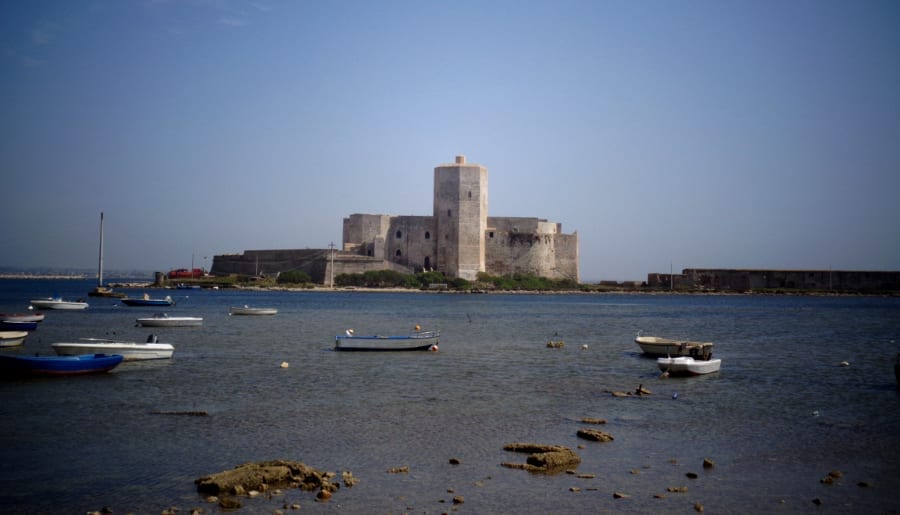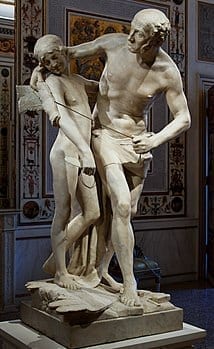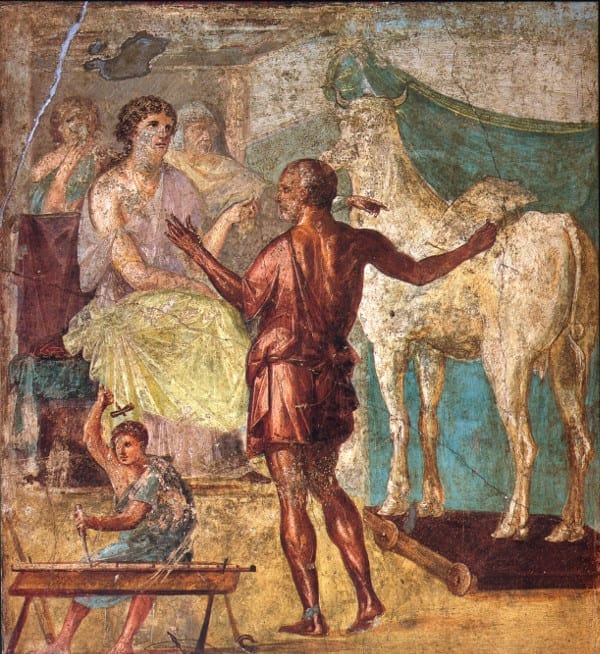Trapani Eryx Segesta in-depth
trapani eryx segesta in-depth
Trapani Eryx Segesta – In-depth
lazzaretto di trapani
L’edificio fu realizzato agli inizi del sec. XIX per iniziativa del tenente generale Giovan Battista Fardella. Sorge sull’isola di Sant’Antonio, oggi unita alla terraferma, dove nella prima metà del sec. XIII venne edificata la Chiesa di Sant’Antonio del Mare, che aveva la funzione di ospitare gli equipaggi delle barche sospette, presunti portatori di epidemie, per il periodo di quarantena.
daedalus
According to the famous legend the mythical architect and inventor Daedalus was from Athens, from where he was exiled for having killed for jealousy of trade his grandson Talos. So he went to Crete to King Minos, where he not only built the Labyrinth, but also a bronze cow capable of containing a human being: Pasiphae, the wife of Minos, entered it and he mated with a bull; the result was the birth of the Minotaur, who was imprisoned in the Maze built by Daedalus. When Minos discovered that Daedalus himself was the author of the hideous bronze sculpture, he locked him with his son in the Labyrinth. Daedalus managed to escape in flight making his wings, but during the flight lost his son Icarus. He thus arrived in Sicily, in the area of Agrigento, at the court of Sicano king Cocalo, where he made many creations worthy of wonder, including the impregnable citadel of Camico. To Eryz Daedalus, after having realized the grandiose supporting work of the cliff, he would have consecrated to Aphrodite Ericina a solid gold hive, an extraordinary work that perfectly imitated a real hive. Nevertheless, King Minos also came to Sicily in search of revenge: Daedalus, with the help of the daughters of King Cocalo, killed him by cooking him with the steam of a sort of Turkish bath. As Diodorus Siculus tells us (4, 77-79), the body of the Cretan king was buried by his companions in a monumental tomb in the territory of Agrigento, a tomb that later became a Sican place of worship. According to Virgil, after Sicily Daedalus went to Cuma.
diodoro siculo
The Sicilian historian, who lived in the first century B.C., gives us an image of it in Roman times: “When consuls, generals and all those who hold a post arrive in Sicily, they will pass by Eryz, honoring the temple of Venus with sacrifices and offerings. Stripping themselves of the insignia of their dignity, they give themselves to cheerful enjoyment with women, believing that they are so pleasing to the goddess”. The allusion is to the institute of sacred prostitution, typical of the gods of oriental origin and diffused in Phoenician environment in particular.
Aghatocles
Of humble origins and, at least initially, with a democratic thinking, Agathocles seized power and became the tyrant of Syracuse between 360 and 289 B.C. He tried to transform Sicily into a real unitary Hellenistic kingdom both through military actions against Carthage and the indigenous peoples and thanks to a careful network of alliances, But the great power of Carthage caused his plan to fail.
Trapani Eryx Segesta in-depth
Map


























Previous
Next



